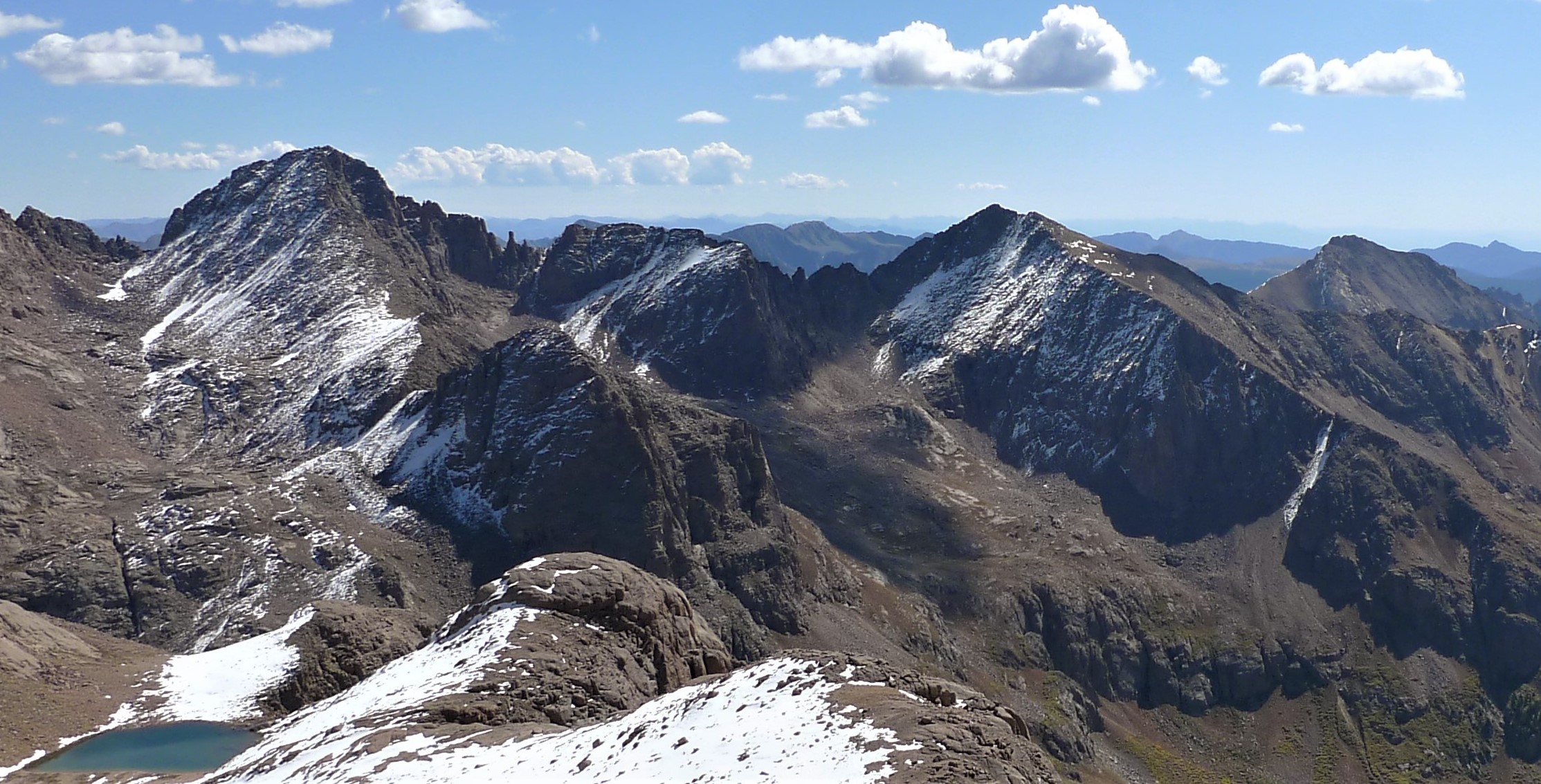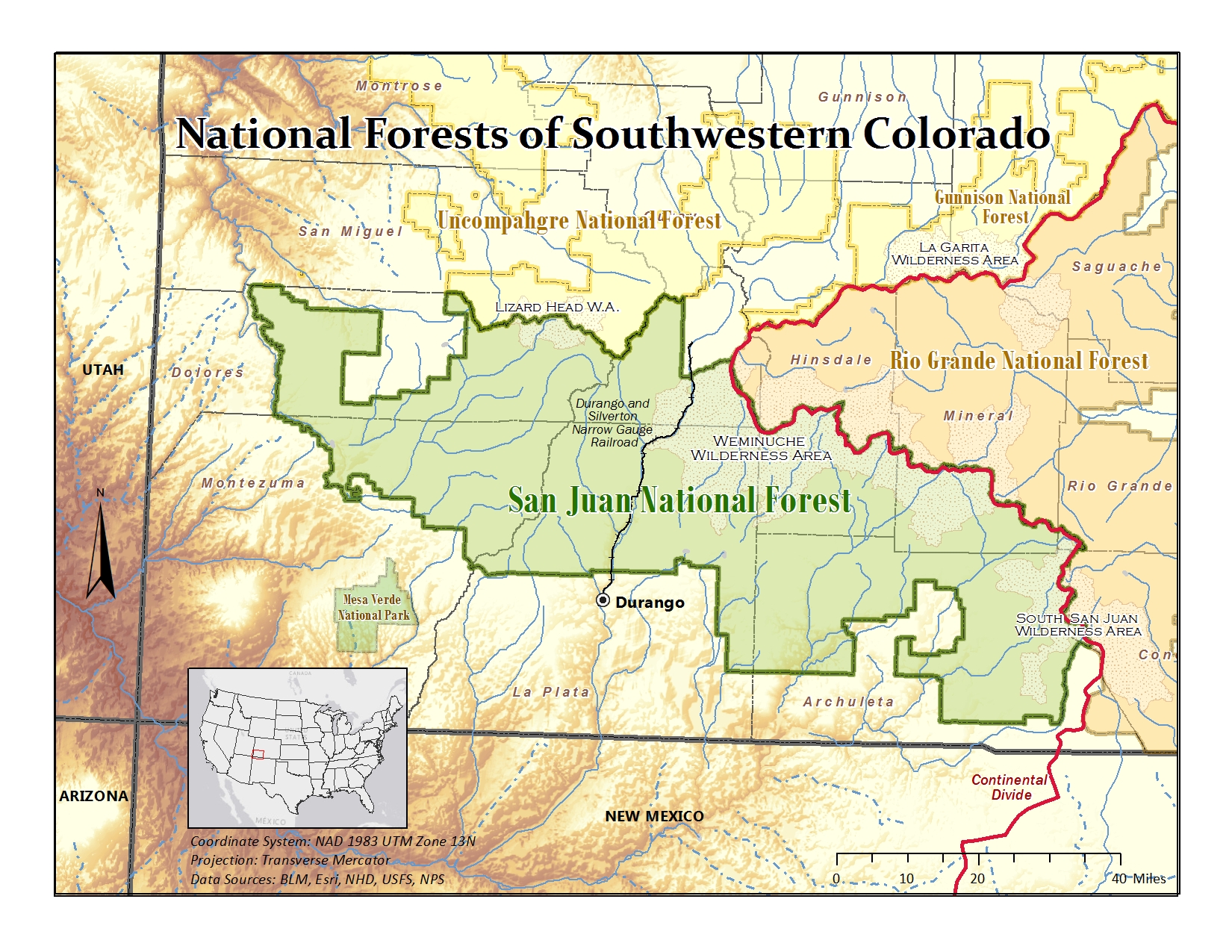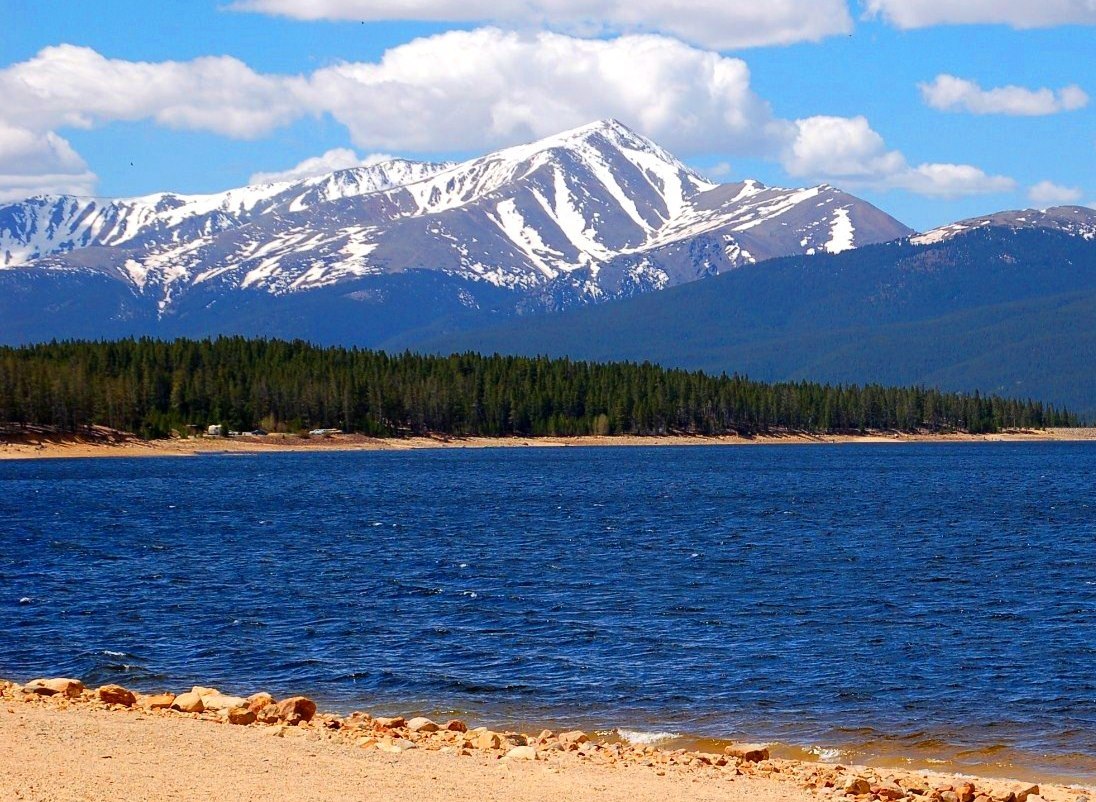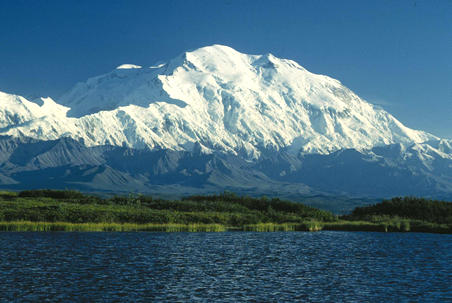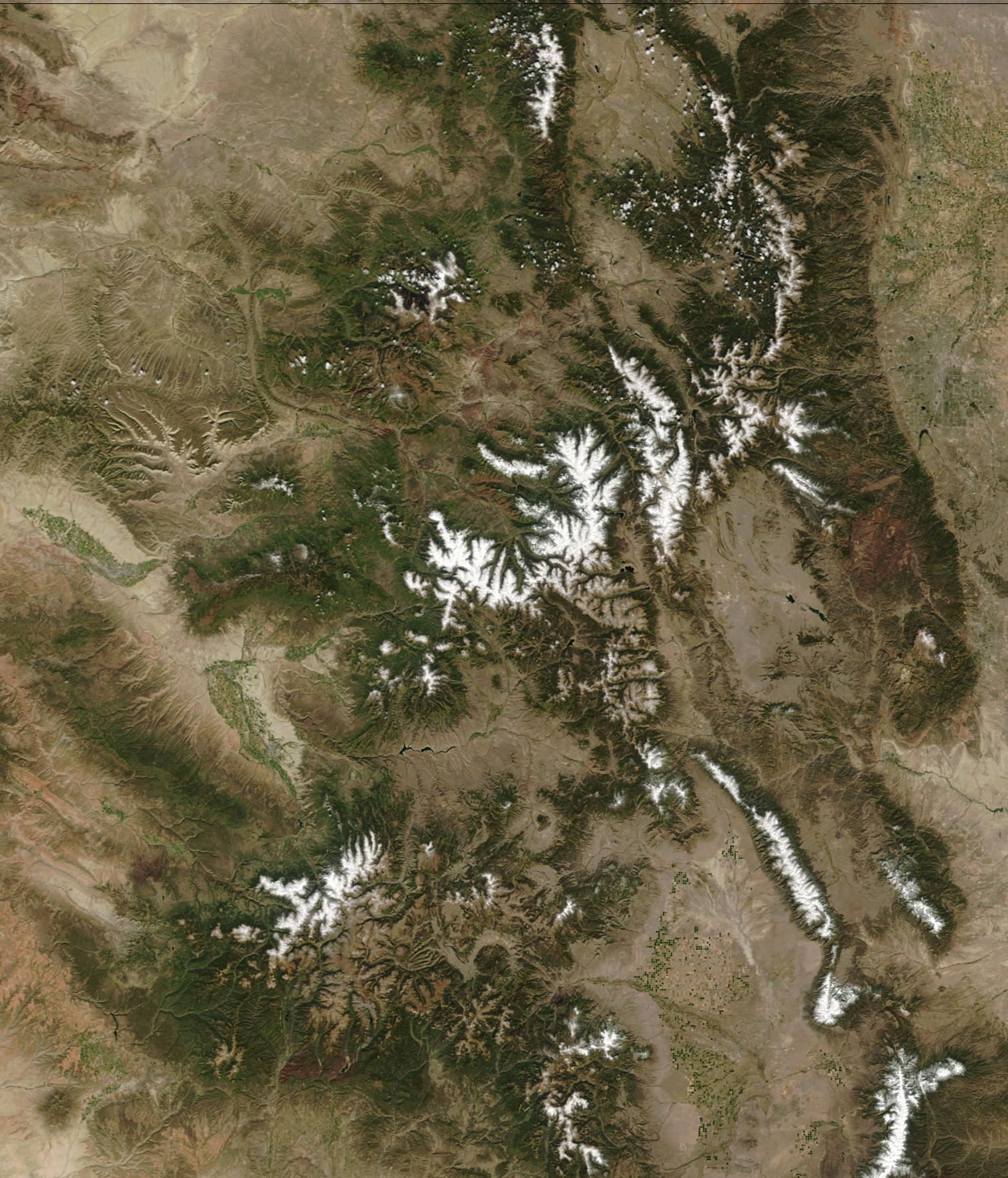|
Jupiter Mountain
Jupiter Mountain is a high mountain summit in the Needle Mountains range of the Rocky Mountains of North America. The thirteener is located in the Weminuche Wilderness of San Juan National Forest, northeast by north ( bearing 33°) of the City of Durango in La Plata County, Colorado, United States. Climate According to the Köppen climate classification system, Jupiter Mountain is located in an alpine subarctic climate The subarctic climate (also called subpolar climate, or boreal climate) is a climate with long, cold (often very cold) winters, and short, warm to cool summers. It is found on large landmasses, often away from the moderating effects of an ocean, ge ... zone with cold, snowy winters, and cool to warm summers. Due to its altitude, it receives precipitation all year, as snow in winter, and as thunderstorms in summer, with a dry period in late spring. Historical names *Jupiter Mountain – 1972 *Jupiter Peak See also * List of Colorado mountain ranges ... [...More Info...] [...Related Items...] OR: [Wikipedia] [Google] [Baidu] |
Sea Level Datum Of 1929
The National Geodetic Vertical Datum of 1929 is the official name since 1973 of the vertical datum established for vertical control surveying in the United States, United States of America by the General Adjustment of 1929. Originally known as Sea Level Datum of 1929, NGVD 29 was determined and published by the National Geodetic Survey and used to measure the elevation of a point above and depression (geology), depression below mean sea level (MSL). NGVD29 was superseded by the North American Vertical Datum of 1988 (NAVD 88), based upon reference to a single benchmark (referenced to the new International Great Lakes Datum of 1985 local mean sea level height value), although many cities and U.S. Army Corps of Engineers "legacy" projects with established data continued to use the older datum. Methodology Mean sea level was measured at 26 tide gauges: 21 in the United States and 5 in Canada. The datum was defined by the observed heights of mean sea level at the 26 tide gauges and ... [...More Info...] [...Related Items...] OR: [Wikipedia] [Google] [Baidu] |
San Juan National Forest
The San Juan National Forest is a U.S. National Forest covering over 1,878,846 acres (2,935.7 sq mi, or 7,603.42 km²) in western Colorado. The forest occupies land in Archuleta, Conejos, Dolores, Hinsdale, La Plata, Mineral, Montezuma, Rio Grande, San Miguel and San Juan Counties. It borders the Uncompahgre National Forest to the north and the Rio Grande National Forest to the east. The forest covers most of the southern portion of the San Juan Mountains west of the Continental Divide. The forest contains two alpine wilderness areas; the Weminuche and South San Juan, as well as the Piedra Area. The Durango and Silverton Narrow Gauge Railroad passes through the National Forest. The name of the forest comes from the San Juan River, which was originally called the Rio San Juan, after Saint John the Baptist (San Juan Bautista in Spanish). History Theodore Roosevelt created the forest by proclamation on June 3, 1905. Forest headquarters are located in Durango ... [...More Info...] [...Related Items...] OR: [Wikipedia] [Google] [Baidu] |
Mountains Of La Plata County, Colorado
A mountain is an elevated portion of the Earth's crust, generally with steep sides that show significant exposed bedrock. Although definitions vary, a mountain may differ from a plateau in having a limited summit area, and is usually higher than a hill, typically rising at least 300 metres (1,000 feet) above the surrounding land. A few mountains are isolated summits, but most occur in mountain ranges. Mountains are formed through tectonic forces, erosion, or volcanism, which act on time scales of up to tens of millions of years. Once mountain building ceases, mountains are slowly leveled through the action of weathering, through slumping and other forms of mass wasting, as well as through erosion by rivers and glaciers. High elevations on mountains produce colder climates than at sea level at similar latitude. These colder climates strongly affect the ecosystems of mountains: different elevations have different plants and animals. Because of the less hospitable terrain and ... [...More Info...] [...Related Items...] OR: [Wikipedia] [Google] [Baidu] |
Mountains Of Colorado
This list includes significant mountain peaks and high points located in the United States arranged alphabetically by state, district, or territory. The highest peak or point in each state, district or territory is noted in bold. Significant mountain peaks and high points Alabama *Brindley Mountain * Cheaha Mountain, highest summit in the State of Alabama *Monte Sano Mountain * Capshaw Mountain * Dirtseller Mountain * Frog Mountain *Hawk Pride Mountain * Gunters Mountain *Sand Mountain (Alabama) * Keel Mountain (Alabama) *Halama Mountain Alaska * Afognak Mountain, summit of Afognak Island * Amak Volcano, active stratovolcano * Amherst Peak * Amulet Peak * Andy Simons Mountain * Annex Peak * Anvil Peak , active stratovolcano that forms the summit of Semisopochnoi Island * Arthur Peak * Asses Ears (Alaska) * Atna Peaks * Atuk Mountain , summit of St. Lawrence Island * Augustine Volcano, active lava dome that forms the summit of Augustine Island * Auke Mo ... [...More Info...] [...Related Items...] OR: [Wikipedia] [Google] [Baidu] |
List Of Colorado County High Points
This is a list of all 64 counties of the U.S. State of Colorado by their points of highest elevation. Of the 50 highest county high points in the United States, 30 are located in Colorado. The highest point in Colorado is the summit of Mount Elbert in Lake County, the highest summit the entire Rocky Mountains at elevation. Of the 64 Colorado counties, 20 counties rise above elevation, 32 counties rise above , 42 counties rise above , and all 64 Colorado counties rise above . Use the "Map this section's coordinates" link to view the location of each of the Colorado county high points. __TOC__ Colorado county high points Gallery Mt._Elbert.jpg, 1. Mount Elbert in Lake County Mount_Harvard_(Colorado)_-_2006-07-16.jpg, 2. Mount Harvard in Chaffee County MtBlancaEast.jpg, 3. Mount Blanca straddling Alamosa and Costilla counties Uncompahgre_peak.jpg, 6. Uncompahgre Peak in Hinsdale County Crestone_peak_2.jpg, 7. Crestone Peak in Saguache County Mount_Lincoln_Colorad ... [...More Info...] [...Related Items...] OR: [Wikipedia] [Google] [Baidu] |
List Of The Most Prominent Summits Of Colorado
The following sortable table comprises the 100 Topographic prominence, most topographically prominent Summit, mountain peaks of the United States, U.S. Colorado, State of Colorado. Elevation, Topographic elevation is the vertical distance above the reference geoid, a mathematical model of the Earth's sea level as an equipotential Gravity, gravitational surface. The topographic prominence of a summit is the elevation difference between that summit and the highest or key col to a higher summit. The topographic isolation of a summit is the minimum great-circle distance to a point of equal elevation. This article defines a significant summit as a summit with at least of topographic prominence, and a major summit as a summit with at least of topographic prominence. An Ultra-prominent peak, ultra-prominent summit is a summit with at least of topographic prominence. There are List of the ultra-prominent summits of the United States, 126 ultra-prominent summits in the United Sta ... [...More Info...] [...Related Items...] OR: [Wikipedia] [Google] [Baidu] |
List Of Mountain Peaks Of Colorado
This is a list of major mountain peaks in the U.S. State of Colorado. This article comprises three sortable tables of major mountain peaksThis article defines a significant summit as a summit with at least of topographic prominence, and a major summit as a summit with at least of topographic prominence. All summits in this article have at least 500 meters of topographic prominence. An ultra-prominent summit is a summit with at least of topographic prominence. in Colorado. The summit of a mountain or hill may be measured in three principal ways: #The topographic elevation of a summit measures the height of the summit above a geodetic sea level.All elevations in this article include an elevation adjustment from the National Geodetic Vertical Datum of 1929 (NGVD 29) to the North American Vertical Datum of 1988 (NAVD 88). For further information, please see this United States National Geodetic Surveybr>noteIf the elevation or prominence of a summit is calculated as ... [...More Info...] [...Related Items...] OR: [Wikipedia] [Google] [Baidu] |
List Of Colorado Fourteeners
This is a list of mountain peaks in the U.S. State of Colorado that exceed of elevation. In the mountaineering parlance of the Western United States, a ''fourteener'' is a mountain peak with an elevation of at least 14,000 feet. This is a complete list of the 53 fourteeners in the U.S. State of Colorado with at least of topographic prominence. See the main fourteener article, which has a list of all of the fourteeners in the United States, for some information about how such lists are determined and caveats about elevation and ranking accuracy. The summit of a mountain or hill may be measured in three principal ways: #The topographic elevation of a summit measures the height of the summit above a geodetic sea level.All elevations in the 48 states of the contiguous United States include an elevation adjustment from the National Geodetic Vertical Datum of 1929 (NGVD 29) to the North American Vertical Datum of 1988 (NAVD 88). For further information, please see this Un ... [...More Info...] [...Related Items...] OR: [Wikipedia] [Google] [Baidu] |
List Of Mountains Of The United States
This list includes significant mountain peaks and high points located in the United States arranged alphabetically by state, district, or territory. The highest peak or point in each state, district or territory is noted in bold. Significant mountain peaks and high points Alabama *Brindley Mountain * Cheaha Mountain, highest summit in the State of Alabama *Monte Sano Mountain * Capshaw Mountain * Dirtseller Mountain * Frog Mountain *Hawk Pride Mountain * Gunters Mountain *Sand Mountain (Alabama) * Keel Mountain (Alabama) *Halama Mountain Alaska * Afognak Mountain, summit of Afognak Island * Amak Volcano, active stratovolcano * Amherst Peak * Amulet Peak * Andy Simons Mountain * Annex Peak * Anvil Peak , active stratovolcano that forms the summit of Semisopochnoi Island * Arthur Peak * Asses Ears (Alaska) * Atna Peaks * Atuk Mountain , summit of St. Lawrence Island * Augustine Volcano, active lava dome that forms the summit of Augustine Island * Auke Mo ... [...More Info...] [...Related Items...] OR: [Wikipedia] [Google] [Baidu] |
List Of Mountain Ranges Of Colorado
This is a list of the major mountain ranges in the U.S. State of Colorado. All of these ranges are considered subranges of the Southern Rocky Mountains. As given in the table, topographic elevation is the vertical distance above the reference geoid, a mathematical model of the Earth's sea level as an equipotential gravitational surface. The topographic prominence of a summit is the elevation difference between that summit and the highest or key col to a higher summit. The topographic isolation of a summit is the minimum great-circle distance to a point of equal elevation. All elevations in this article include an elevation adjustment from the National Geodetic Vertical Datum of 1929 (NGVD 29) to the North American Vertical Datum of 1988 (NAVD 88). For further information, please see this United States National Geodetic Surveybr>note If an elevation or prominence is calculated as a range of values, the arithmetic mean is shown. __TOC__ Mountain ranges Gallery Image:Mo ... [...More Info...] [...Related Items...] OR: [Wikipedia] [Google] [Baidu] |
Subarctic Climate
The subarctic climate (also called subpolar climate, or boreal climate) is a climate with long, cold (often very cold) winters, and short, warm to cool summers. It is found on large landmasses, often away from the moderating effects of an ocean, generally at latitudes from 50° to 70°N, poleward of the humid continental climates. Subarctic or boreal climates are the source regions for the cold air that affects temperate latitudes to the south in winter. These climates represent Köppen climate classification ''Dfc'', ''Dwc'', ''Dsc'', ''Dfd'', ''Dwd'' and ''Dsd''. Description This type of climate offers some of the most extreme seasonal temperature variations found on the planet: in winter, temperatures can drop to below and in summer, the temperature may exceed . However, the summers are short; no more than three months of the year (but at least one month) must have a 24-hour average temperature of at least to fall into this category of climate, and the coldest month should ave ... [...More Info...] [...Related Items...] OR: [Wikipedia] [Google] [Baidu] |
Köppen Climate Classification
The Köppen climate classification is one of the most widely used climate classification systems. It was first published by German-Russian climatologist Wladimir Köppen (1846–1940) in 1884, with several later modifications by Köppen, notably in 1918 and 1936. Later, the climatologist Rudolf Geiger (1894–1981) introduced some changes to the classification system, which is thus sometimes called the Köppen–Geiger climate classification system. The Köppen climate classification divides climates into five main climate groups, with each group being divided based on seasonal precipitation and temperature patterns. The five main groups are ''A'' (tropical), ''B'' (arid), ''C'' (temperate), ''D'' (continental), and ''E'' (polar). Each group and subgroup is represented by a letter. All climates are assigned a main group (the first letter). All climates except for those in the ''E'' group are assigned a seasonal precipitation subgroup (the second letter). For example, ''Af'' indi ... [...More Info...] [...Related Items...] OR: [Wikipedia] [Google] [Baidu] |
